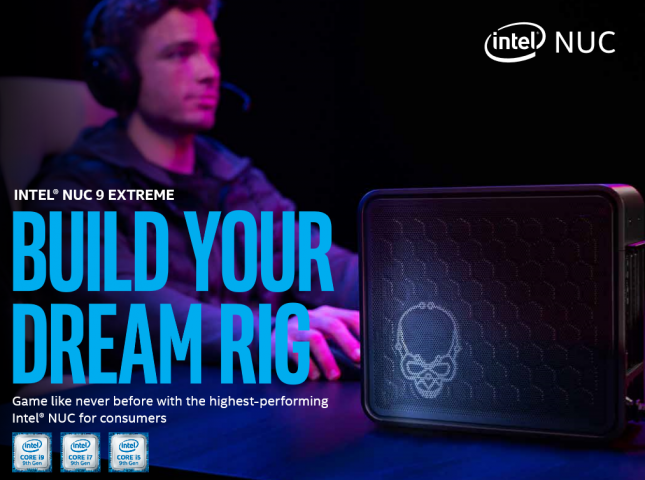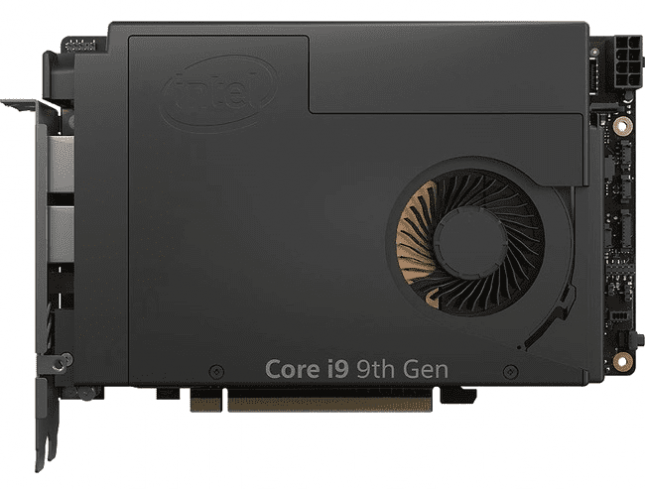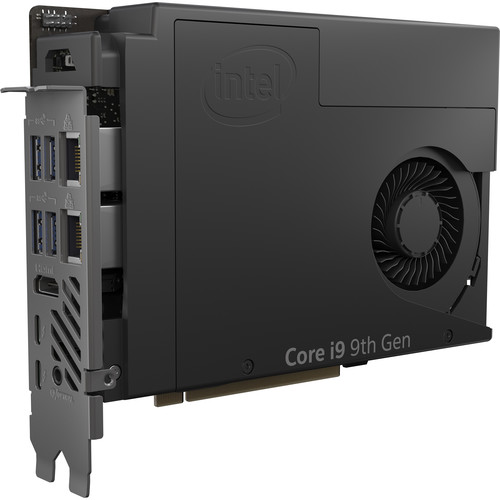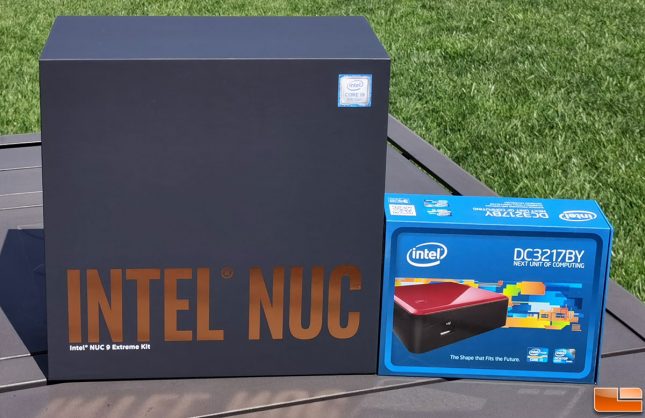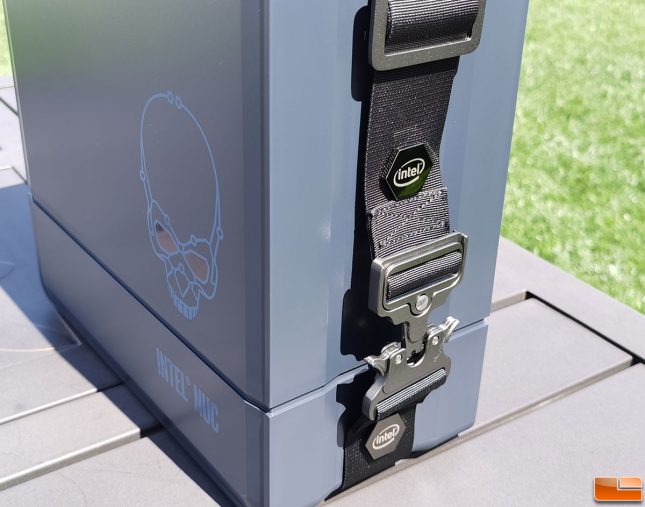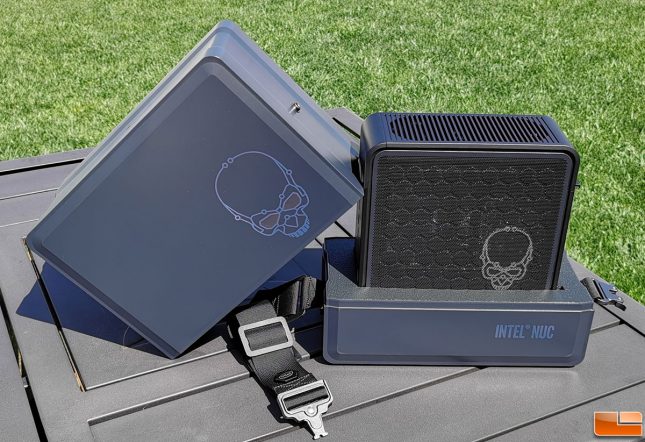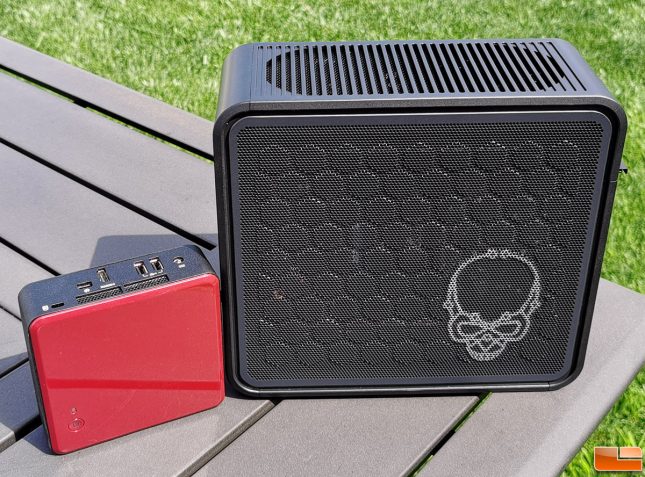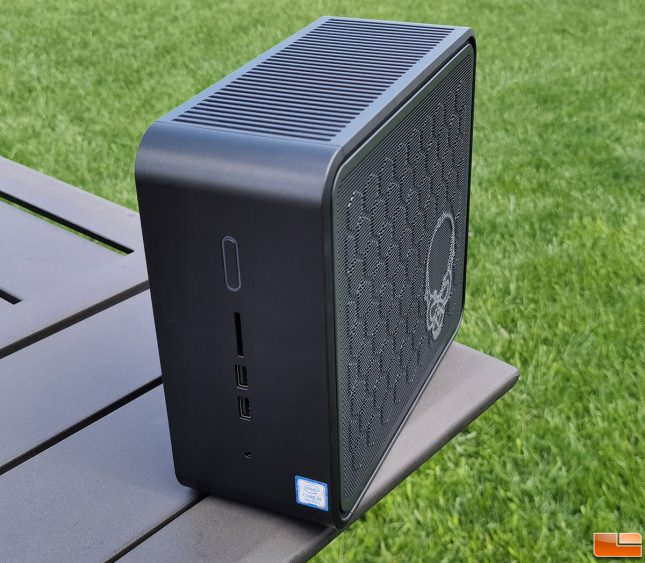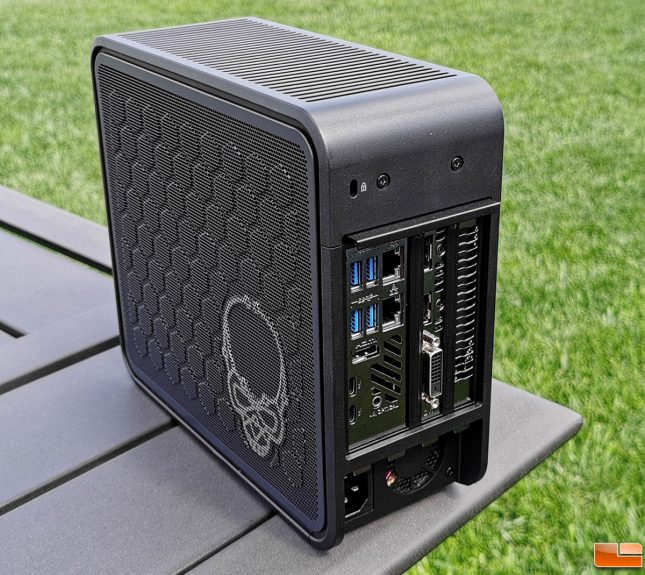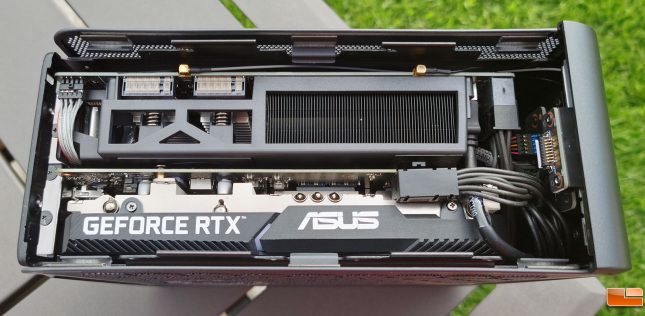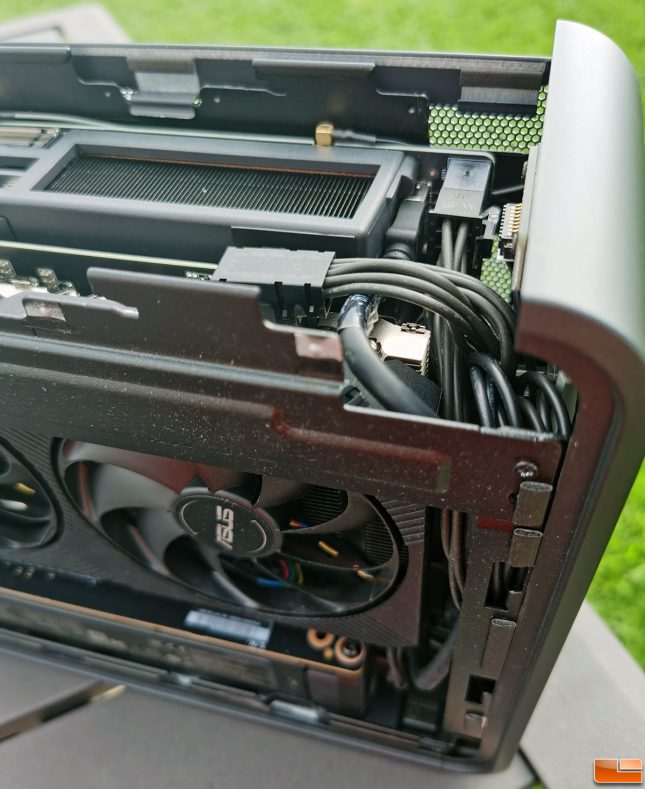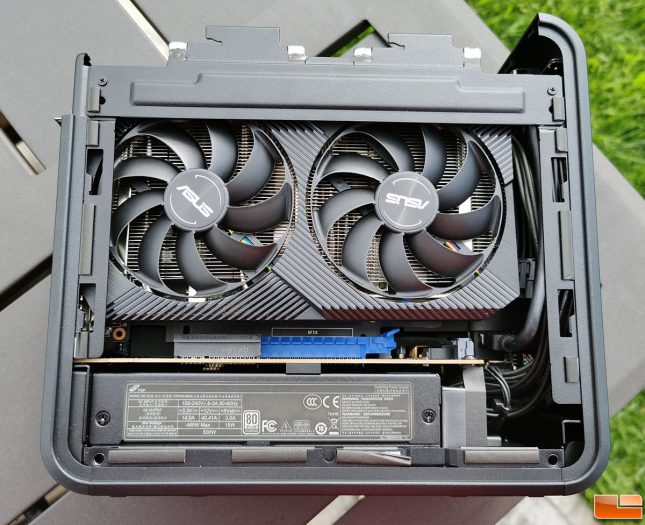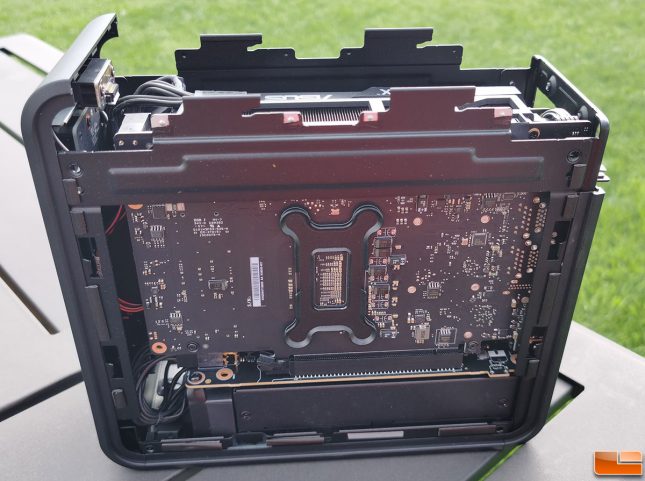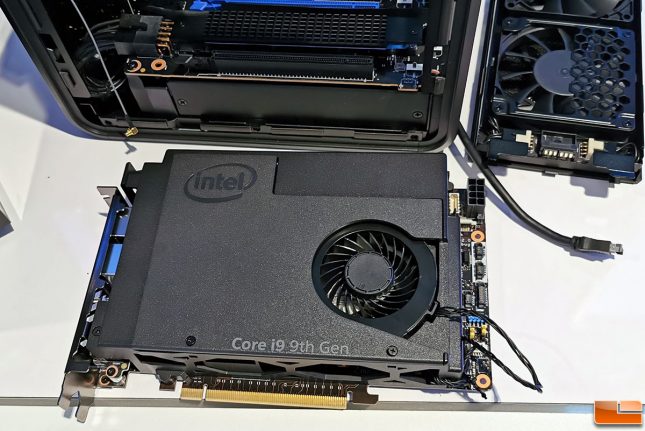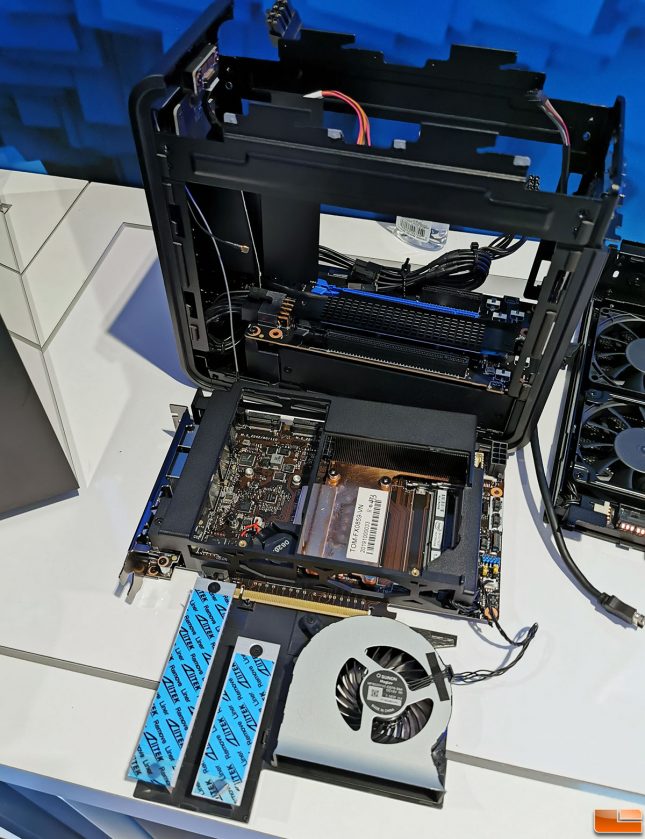Intel NUC 9 Extreme Review – Ghost Canyon with Core i9-9980HK
Modular Computing Meets Intel NUC
During CES 2020, Intel was showing off the NUC 9 Extreme Kit (code named Ghost Canyon) for the very first time. The NUC 9 Extreme Kit is the first Intel NUC to come to market that was designed from the ground up with gamers in mind. The NUC 9 Extreme Kit tips the scales with a beefy 5-liter chassis, but that allows for a gamut of processors to be used along with other high-end hardware.
While this makes it the largest NUC ever made, it still happens to be one of the smallest gaming systems that support desktop discrete graphic. Yes, you can add in a discrete graphics card into this NUC as long as it is no longer than 8-inches in length!
The Intel NUC 9 Extreme Kit is available in a range of top-end 9th Gen Intel Core processors (H-Series), including for the very first time a fully unlocked Core i9 processor. Pricing for the Ghost Canyon NUC i5 kit starts at roughly $1,050, moving up to the Ghost Canyon NUC i7 kit will put you in the $1,250 price range and the flagship Ghost Canyon NUC i9 kit will set you back around $1,700.
For that price you get the NUC compute element, enclosure, 500W internal power supply, two Thunderbolt 3 ports, Intel Wi-Fi 6, Bluetooth 5, Two Intel Gigabit LAN ports, and a single HDMI 2.0a port. You will still need to add DDR4 memory, SSDs, a discrete graphics card and the Windows or Linux based operating system of your choice.
The heart of each of these systems is the Intel NUC Compute Element, which enables an industry standard for modular compute utilizing Intel Architecture and standard compute technologies and interfaces. Intel says that they worked closely with more than 25 partners to create modular solutions based on the Compute Element. They have also have begun development on the 2021 products and are actively defining the 2022 products. The goal for Intel for their partners and customers is to offer an easy drop-in solution to upgrade performance with each refresh cycle. Intel would not say more than that, so we can’t tell you exactly how long this platform will remain supported.
The Intel Ghost Canyon NUC Kit that we received to review was the flagship model NUC919QNX. This model used the mighty Intel Core i9-9980HK 8-core, 16-thread high-end processor that was introduced in 2019 for laptops as a 45 Watt part during the Coffee Lake architecture refresh. This processor is built on the 14nm processor and clocks between 2.4 – 5 GHz.
The packaging for the Intel NUC 9 Extreme kit for the Ghost Canyon NUC series is over the top. Placing the packing from the Intel NUC 9 Extreme kit from 2020 next to the Intel NUC DC3217BY kit from 2002 gives you an idea of how the NUC has grown over the years.
Once you remove the outer packaging you’ll find an another plastic case inside. Intel secures the inner plastic case enclosure that contains the NUC with a strap that features a metal latch style retention mechanism. This is unlike anything that we have ever seen before on a DIY PC kit. The Intel Extreme skull on the plastic case has a UV reactive finish, so it will glow if you have a black light. Intel did a great job on its packaging!
One should obviously save this case as the NUC 9 Extreme Kit fits securely inside and it will come in handy should it ever need to be transported.
The measurements of the NUC 9 Extreme kit come in at 288mm x 216mm x 96mm, which is a bit larger than the NUC DC3217BY kit sitting next to it in the image above that is 116.6mm x 112.0mm x 39.0mm.
The front of the NUC 9 Extreme has the power button, two USB 3.1 Type-A ports, an SD card reader, and an audio combo jack.
Flipped around, you’ll discover four USB 3.1 Type-A ports, dual Gigabit Ethernet jacks, optical audio out, an HDMI video output, and a pair of Thunderbolt 3 (USB Type-C) ports on the Intel Compute Unit. The optional ASUS GeForce RTX 2070 Mini graphics card that came in our review unit offers DisplayPort, HDMI, and DVI-D video outputs. One might notice that there are no external antenna mounts for the Intel AX200 wireless card that supports Wi-Fi 6 (802.11ax) and Bluetooth 5. This is because the antenna is mounted internally much like a laptop. The power supply is at the very bottom and takes a standard connector.
Our Intel NUC 9 Extreme Kit came configured with the following hardware:
- Intel NUC 9 Extreme Kit NUC919QNX w/ Core i9-9980HK CPU ($1,700)
- DRAM 16GB (2x8GB) HyperX Impact DDR4-3200 ($107.63)
- GPU ASUS Dual-RTX2070-08G-MINI ($419.99)
- SSDs:
So, you are looking at about $2,900 for a build like the one that we will be testing and that does not factor in any software.
Our system came assembled, but we took it apart to take a quick look at how it goes together. Once we started taking it apart we quickly discovered that Intel engineers came up with an impressive design that fits together so perfectly it is actually a little intimidating.
It looks like Intel is using an FSP Group FSP500-30AS 500W ATX Power Supply that is 80 Plus Platinum Certified for this model. This power supply looks like it was designed for rack mounted systems and we could not find it listed for sale online. We asked Intel about replacement parts and they reminded us that the NUC comes backed by a 3-year warranty. The NUC 9 Extreme with this power supply model supports discrete graphics cards that are up to 8-inches in length and use no more than 225 watts of power.
On the other side you can see the back of the Intel Compute Element that holds the processor, memory, and SSDs. This module can be swapped out for a different one down the road, so this system has an upgradeability path. Intel confirmed to Legit Reviews that they are designing Compute Elements with backwards compatibility in mind.
We didn’t take apart the Compute Element module in our review unit as we didn’t want to break something since we had less than a week for testing. We will share some photos that we personally took at CES 2020 when we were able to take apart one of the demo systems from the show.
Things are tight, but it all manages to fit inside the Compute Element. The compute element is actively cooled by a 40mm fan and the M.2 drives do make contact with thermal pads that help transfer heat. Notice that the left M.2 slot supports 110mm drives while the slot on the right only supports up to 80mm SSDs. There is also a slot for a third M.2 drive under the black heatsink on the PCB that is still inside the enclosure. That slot is 110mm in length. The 9980HK processor makes direct contact with a vapor chamber cooler that keeps the 8-core, 16-thread processor running as cool as possible.
Let’s see how this system performs!

